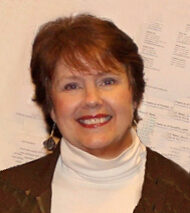
Nancy Huntting, Aesthetic Realism consultant, writes:
The new issue of TRO is titled “What Our Minds Are For,” and it’s urgently needed by everyone—including leaders of nations! Aesthetic Realism’s great understanding of mind is in this issue—the way of mind that makes for art, and the way of mind that causes distress and also makes for cruelty. This is knowledge that can enable people really to have thought they’re proud of. As we learn, in this TRO, about what in mind makes for authentic poetry, and learn about the mind of Shakespeare, our own best possibilities of mind are encouraged. You’ll be thrilled by “What Our Minds Are For,” the current issue of The Right of Aesthetic Realism to Be Known.
The commentary by Ellen Reiss begins:
Dear Unknown Friends:
We begin here to serialize The Poetic Trinity; or, Poetry—Whence, How, Whither?, a 1970 lecture by Eli Siegel. This talk is about poetry and art as such—definitively and delightfully. But it is also about the most intimate and urgent matter in everyone’s life: what our minds are for. As you will soon see, in this first part of the lecture there is a very stirring, important discussion about the mind of Shakespeare, and mind as such.
We are using our minds all the time. Whether we’re angry, ecstatic, disgusted, uncertain, planning, arguing, our minds are being used. In each of those ways of being and all others, our minds are at work. But how, and with what purpose?
What We Want
Aesthetic Realism explains that the way an artist’s mind is used in coming to something that is authentic art, is how we most deeply want to use our own minds about the things we meet. “All beauty,” Aesthetic Realism explains, “is a making one of opposites, and the making one of opposites is what we are going after in ourselves.” For example, every instance of art is a oneness of self and world: an individual expressing him- or herself through being just to the world other than oneself. And in this grand, just oneness of self and world, other opposites also are one. Whether the art is poetry, or music, painting, dance, sculpture—there is big feeling inseparable from exactitude, logic. There is surprise at one with continuity. There is vividness at one with nuance; and power that is also delicate….Read more